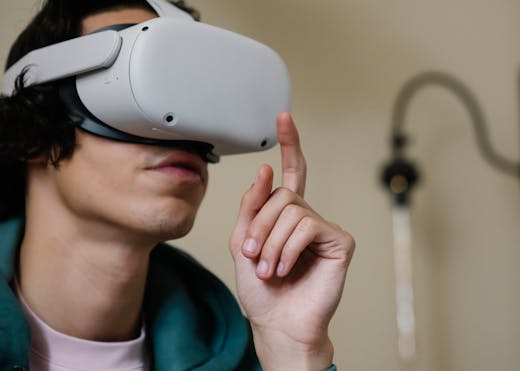Contents
- 1 Tech eTrueSports
- 2 The Evolution of Tech in Sports
- 3 Historical Background
- 4 Performance Enhancement Through Wearable Technology
- 5 Wearable Tech—represents one of the high-growth areas.
- 6 Impact on Training and Recovery
- 7 Big Data and Analytics in Sports
- 8 Big Data Analytics Applications Across several Sports
- 9 AI AND MACHINE LEARNING IN COACHING AND TRAINING
- 10 AI in Video Analysis
- 11 Predictive Analytics in Machine Learning for Sports Engagement
- 12 AR and VR Take Fan Engagement to a New Level
- 13 AR in Live Sports
- 14 Immersive Experiences in Virtual Reality
- 15 Blockchain and Cryptocurrency in Sports
- 16 Blockchain for Ticketing and Merchandise.
- 17 Cryptocurrency for Payment and Rewards
- 18 In effect, this expansion blurs the line that traditionally distinguished esports from conventional sports.
- 19 Esport bahis has grown exponentially in only the last two years.
- 20 Conclusion
- 21 Faq’s
- 21.1 What is Tech eTrueSports?
- 21.2 How is wearable technology going to develop athletic performance?
- 21.3 What is the role of big data analytics in sports?
- 21.4 How are AI techniques employed in the space of sports coaching and training?
- 21.5 How do AR and VR technologies improve fan engagement?
- 21.6 How does blockchain and cryptocurrency play into sports?
- 21.7 How is eSports converging with traditional sports?
- 21.8 What are the ethical and privacy concerns raised by tech eTrueSports?
- 21.9 What are examples of successful integration of tech and sports?
- 21.10 Q: What direction can eTrueSports take in development?
- 21.11 If you found our content helpful don’t forget to share it on your social media: Twitter
- 21.12 More Articles: Home
Tech eTrueSports
Changing winds in sports, technology finds a central role in altering the ways man experiences, analyzes, and engages himself in many athletic activities. The most exciting junction that can be reflectively placed at the junction of technology and sports is eTrueSports. Tech in eTrueSports touches quite a variety of different areas—benefits now being debated against the challenges and what the future might hold for this exciting area.
The Evolution of Tech in Sports

The merging of technology with sports cannot be said to be a recent phenomenon. Over the years, incremental innovations have made it into instant replays, digital scoring boards, and biomechanical analyses. The technological integrations remained almost nil until now, but the last decade had unprecedented growth in technological nodes with the enigma called AI, big data, IoT, or Internet of Things, and finally, wearable tech. Improvements in this technology increased the sports person’s precision and efficiency, giving way to new windows of fan engagement and monetization.
Historical Background
In the early years of the 20th century, technologies in sports were somewhat primordial. That was the era: stopwatches that told the time elapsed in races and radio broadcasts that spread the news from games live. Most importantly, due to the live transmission, changed the whole outlook of sports viewing in people’s living rooms during the post-war period. More complex analytics for sports also evolved at that time: the teams started crunching data for a better view of the player’s performance and game strategy.
Technology in sports today is deep-rooted and intricate. Innovations from the omnipresent Hawk-Eye in tennis and cricket to the present super-star Video Assistant Referee in football and instant replay mechanisms in American football have vastly improved the accuracy and fairness of officiating. Much of what these technologies have done is not only to enhance the integrity of these games but also to introduce to fans a new level of excitement in literally analyzing these high-tech interventions by themselves.
Performance Enhancement Through Wearable Technology

Perhaps the most important contribution that Tech eTrueSports can make is in the area of performance enhancement. Smartwatches, activity trackers, and special sporting gear have inbuilt technologies that can give real-time updates on the performance of several performance metrics for athletes and coaches. These real-time updates can track heart rates, levels of hydration, muscular tension, and even levels of mental focus, which facilitate tailored training regimens alongside injury prevention strategies for athletes. Granular data that is captured facilitates a much more detailed understanding of athlete performance capabilities and limitations and can therefore make the same optimal.
Wearable Tech—represents one of the high-growth areas.
Wearable technology has indeed come a long way from its early simple pedometers to what has become a different device today with state-of-the-art sensing elements and algorithms that can, however, do an awful lot more today. For instance, as one athlete in one of the studies remarked, “The GPS-based watch measures speed, distance, and elevation and gives outstanding results about training processes.” Sensorial clothing, on the other hand, can avoid injuries even before they happen with the aid of a feature such as monitoring the activity of muscles and detecting muscle misbalances.
Impact on Training and Recovery

These wearables, however, have implications for more than just the training paradigm; they delve deeply into the recovery paradigm. High-tech gadgets are those—such as the WHOOP strap—that provide some of the most extended reports regarding the quality of sleep, heart rate variability, and levels of recovery for athletes. It thus helps the athlete fine-tune his recovery protocols, allowing him to be at the highest level of competition. Its ability to track athlete workload and degree of stress can help coaches develop training programs to produce maximum performance results while minimizing the possibility of over-training.
Big Data and Analytics in Sports
The advent of big data analytics changed everything about how a sports team strategies and plays. Using vast reams of data derived from games, practices, and individual player statistics, it makes meaningful inferences regarding the performance of players, the strategies of opposing teams, and game dynamics. Predictive analytics can project outcomes that will help coaches decide when to field which players and what in-game tactics should be employed. These data-driven contests not only make the experience of enjoying favorite sports better for fans but also generally raise the performance bar of the teams.
There are quite a few activities that pave the way in forming the process of data collection and analysis in sports. The data originates from various sources—wearable devices, video footage of games, or sensor systems. It is in turn processed and analyzed with the help of advanced algorithms and machine learning techniques. For instance, in soccer, it is possible to measure data tracked quantitatively, such as motion across the pitch, accuracy in passing, and positioning in defense. Therefore, such insights would splendidly help in coming up with new, more potent game plans and training regimes.
Big Data Analytics Applications Across several Sports

Big data analytics is finding its application in various sports. In baseball, for instance, sabermetrics has been adopted and has revolutionized the functions of a team, from mere talent evaluation to strategic thinking. With data analyzed for performance by the player, teams can mine under-valued talent and have optimized line-ups. With data, basketball teams know what shots to take and what defensive scheme to implement how much time resting players will buy them to prevent them from getting too fatigued. One coach says it’s some of what it takes for these teams to get better performance on the court.
AI AND MACHINE LEARNING IN COACHING AND TRAINING
Artificial intelligence and machine learning are rapidly turning into the assistants of choice in state-of-the-art coaching and training techniques. In video analysis, AI-based systems automatically identify and refine patterns of technique. Simulation of game scenarios can be run by machine learning algorithms, and teams can train for the eventualities. Virtual and augmented reality create immersive environments for training where athletes get realistic practice sessions without fatiguing their actual bodies.
AI in Video Analysis

Video analysis has been part of coaching in most sports. The AI video analysis systems can detect key events that go on within the field of play, be it goals, fouls, or turnovers, among many others. More importantly, the AI relates information about the players’ movement, tactics, and formation to the coach. Consequently, the coach may use such information in analyzing teams’ performances, identifying flaws, and consequently setting up a better game plan.
Predictive Analytics in Machine Learning for Sports Engagement
Machine learning algorithms are further applied in predictive analysis related to sporting engagement. It can analyze history from the collected data, drawing inferences about sports outcomes, for instance, in the likelihood of a player becoming injured, or the probability of winning a game. By this, coaches can add the reasoning when to add player rotations, training loads, and in-game strategies. Second, predictive analytics tells teams who the next budding talents are and who should be a potential transfer target, thereby giving them competitive leverage during recruitment.
AR and VR Take Fan Engagement to a New Level
AR and VR gave much more immersive experiences to fans compared with traditional viewing. Real-time stats, player facts, and interactivity can be embedded into the live game with AR. On the other hand, almost sucking sports fans into a stadium to get a view of 360 degrees of action right from their living room is something that VR will do. Technologies such as these enhance the viewing experience but simultaneously give new streams of revenue due to virtual ticket sales and other exclusively created content.
AR in Live Sports
It is going to change how fans view live sports. For instance, AR applications could seamlessly embed real-time statistics, information on players, or interactive graphics within the live video broadcast to enrich it and make it immersive. What will further be unlocked among fans is other content, including replays, highlights, and behind-the-scenes footage that drives fan engagement and loyalty, and this maximizes viewership and consequent revenues for the organizations concerned with sports.
Immersive Experiences in Virtual Reality

This is how virtual reality would provide new means through which fans—of course, depending on re-creating and offering a simulation of a real event—find themselves placed within an event by re-creating a 360-degree view of the action out of every seat in the house. This will then give access to lockers, which are behind the scenes, or even to player interviews and virtual meet-and-greets, for example; this will further help the sports organizations to acquire fans, keep hold of the fans, and generate revenue from the sale of virtual tickets, subscription, and in-app purchases.
Blockchain and Cryptocurrency in Sports
Blockchain technology, in association with cryptocurrency, stands on the brink of becoming one of the sports industry’s biggest transformers. Seriously, it’s just right for most use cases: decentralized, open ticketing, merchandise sales, athlete contracts—it helps mitigate fraud and assures honesty in the transactions; there is a secure mechanism for the interaction of fans. Cryptocurrencies are literally at the forefront of being adopted as a means of payment in companies with brand sports ecosystems, nakedly opening up new opportunities and incentives for fans and athletes.
Blockchain for Ticketing and Merchandise.
Some of the most exciting blockchain applications in sports relate to ticketing and general merchandise. Blockchain will help control ticket fraud by creating a secure, transparent ledger of every sale; thus, it will guarantee that way the authenticity of a ticket and traceability to its very roots. Blockchain will also help with merchandise sales by giving followers a secure, see-through platform through which to buy team gear and memorabilia.
Cryptocurrency for Payment and Rewards

Are quickly emerging as new means of payment within the sports ecosystem. For instance, some sports clubs and organizations started taking cryptocurrency payments for their tickets, merchandise, or even concessions. Cryptocurrencies might be creating new financial incentives for fans and athletes. Cryptocurrencies might provide justification and reward for fans showing up at games, buying merchandise from a team, or even simply engaging with the content of the team. To that effect, it is easy to imagine a world where athletes are paid in cryptocurrencies, making all performances and related achievements monetizable. Esport and its Nexus with Traditional Sports
In effect, this expansion blurs the line that traditionally distinguished esports from conventional sports.
Esport has grown to competitive video gaming of serious consequences, now ballooned to a billion-dollar business with a global following. While esports get to join forces with conventional sports, opportunities for cross-promotion, newer ways of engaging audiences, and even setting up one stream of revenue emerge. Most teams and leagues invest in esports as a way to engage young and tech-savvy audiences while diversifying their products and offerings. Growth of Esports
Esport bahis has grown exponentially in only the last two years.
Now today, it attracts millions of spectators who watch their team or player play in a bunch of video games, ranging from League of Legends and Dota 2 to Fortnite. Reasons for the growing interest in this sport include a growing base of video gamers, rising streaming services primarily on Twitch and YouTube, and the creation of professional leagues and tournaments for esports. Thus, eSports has also created its place among the big players of the worldwide sports business. This has invited enormous investments into it from traditional Sports Teams, Media Companies, and Brands.
Conclusion
Tech eTrueSports is a new paradigm shift in the sports world, driven by advanced technologies. In the context of sports, tech eTrueSports created an impact from improving performance and data analytics to fan engagement and ethics. As technology continues to grow, its place within this context of sports will become very imperative and will determine the future of athletic performance, fan experience, and generally in the sports ecosystem. Innovations in these areas and tackling the associated challenges will unlock the very best of tech: detrusor.
Faq’s
What is Tech eTrueSports?
Tech eTrueSports refers to the use of the latest technologies in traditional sports to enhance performance, audience, and experience.
How is wearable technology going to develop athletic performance?
Real-time development measures like heartbeat, level of hydration, muscle strain, etc., will be available for designing training programs and preventive measures against injury.
What is the role of big data analytics in sports?
Big data analytics aids in the extraction of useful insights regarding players’ performance, the strategies of opponents, and game dynamics, which are harnessed by the results into actionable insights, leading to data-driven decisions fostering improved team performance.
How are AI techniques employed in the space of sports coaching and training?
So, leveraging AI and ML, through video analysis, it brings out patterns and immediate recommendations based on the technique improvements required. They further offer game scenario simulations by simulating through immersive training environments built up using VR and AR technologies.
How do AR and VR technologies improve fan engagement?
AR and VR technologies create immersion through real-time statistical nuggets, interactivity, and surround views of the action, while monetization opportunities arise from things like virtual ticket sales or paying for exclusive content.
How does blockchain and cryptocurrency play into sports?
In a nutshell, blockchain holds the promise of being able to ensure transparent and secure transactions for ticketing, merchandise sales, and athletic contracts. Cryptocurrencies were fast seeing adoption for payments within the blanket of the sports ecosystem, opening up new financial avenues.
How is eSports converging with traditional sports?
A lot of investments in eSports are currently due to the growth of the platform, cross-promotional opportunities, fan engagement, and revenue generation. Now, a whole slew of investments in eSports by traditional sports teams and leagues is expected to come to attract young, tech-savvy audiences.
What are the ethical and privacy concerns raised by tech eTrueSports?
Risks of misuse of data, compliance with privacy laws, bias of AI decision-making, and integrity of sports are some of the ethical impacts that need to be dealt with to achieve sustainable growth.
What are examples of successful integration of tech and sports?
Examples of successful integration between tech and sports include Aakash between NBA and Second Spectrum in next-generation analytics and interactive visuals and, within the NFL, wearable technology aids health and tracks performance in players.
Q: What direction can eTrueSports take in development?
AI/machine learning developments, 5G technologies, integration of IoT with sports equipment and sports infrastructure, and further development of esports, which has to merge into traditional sports eventually.

